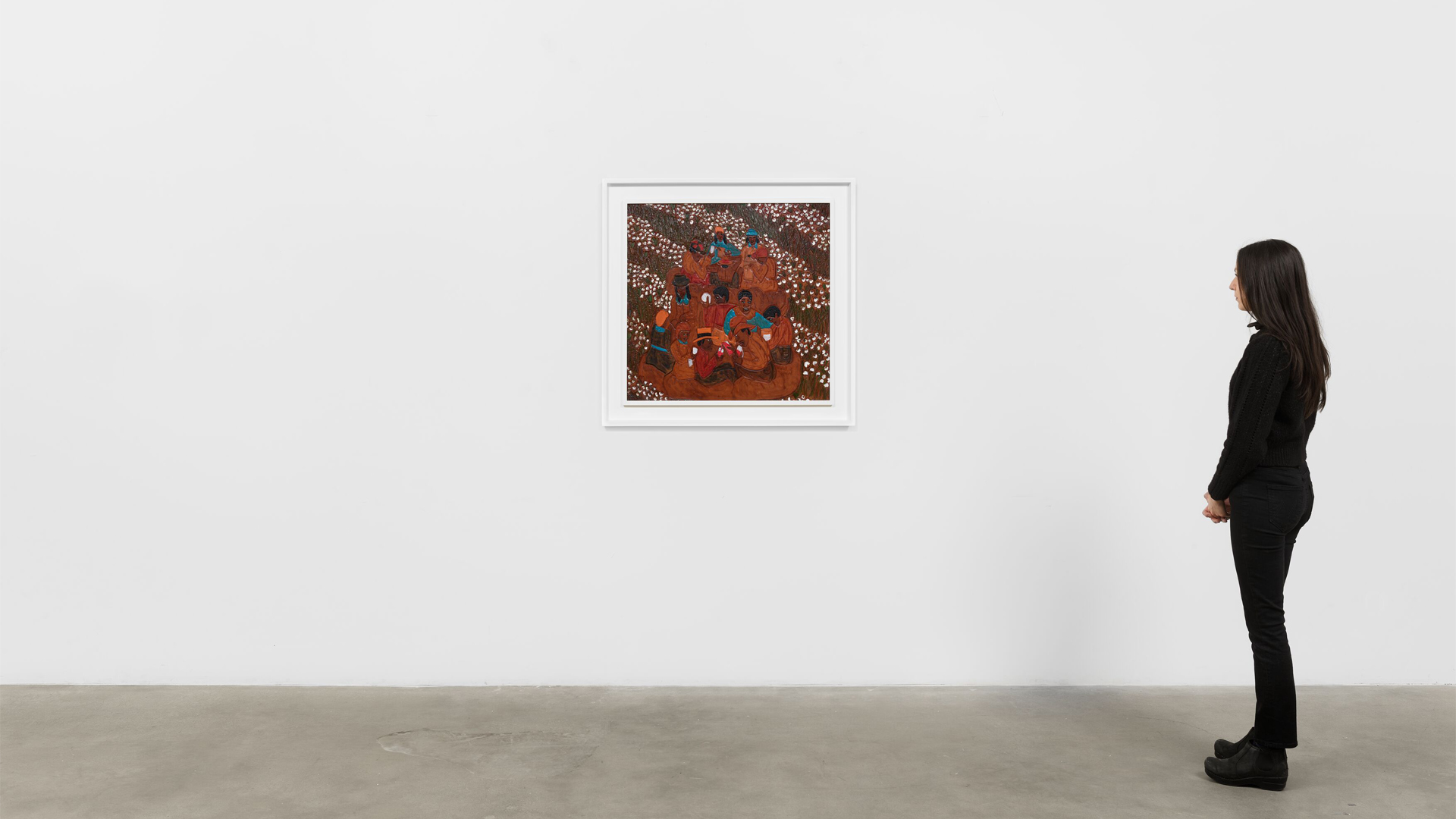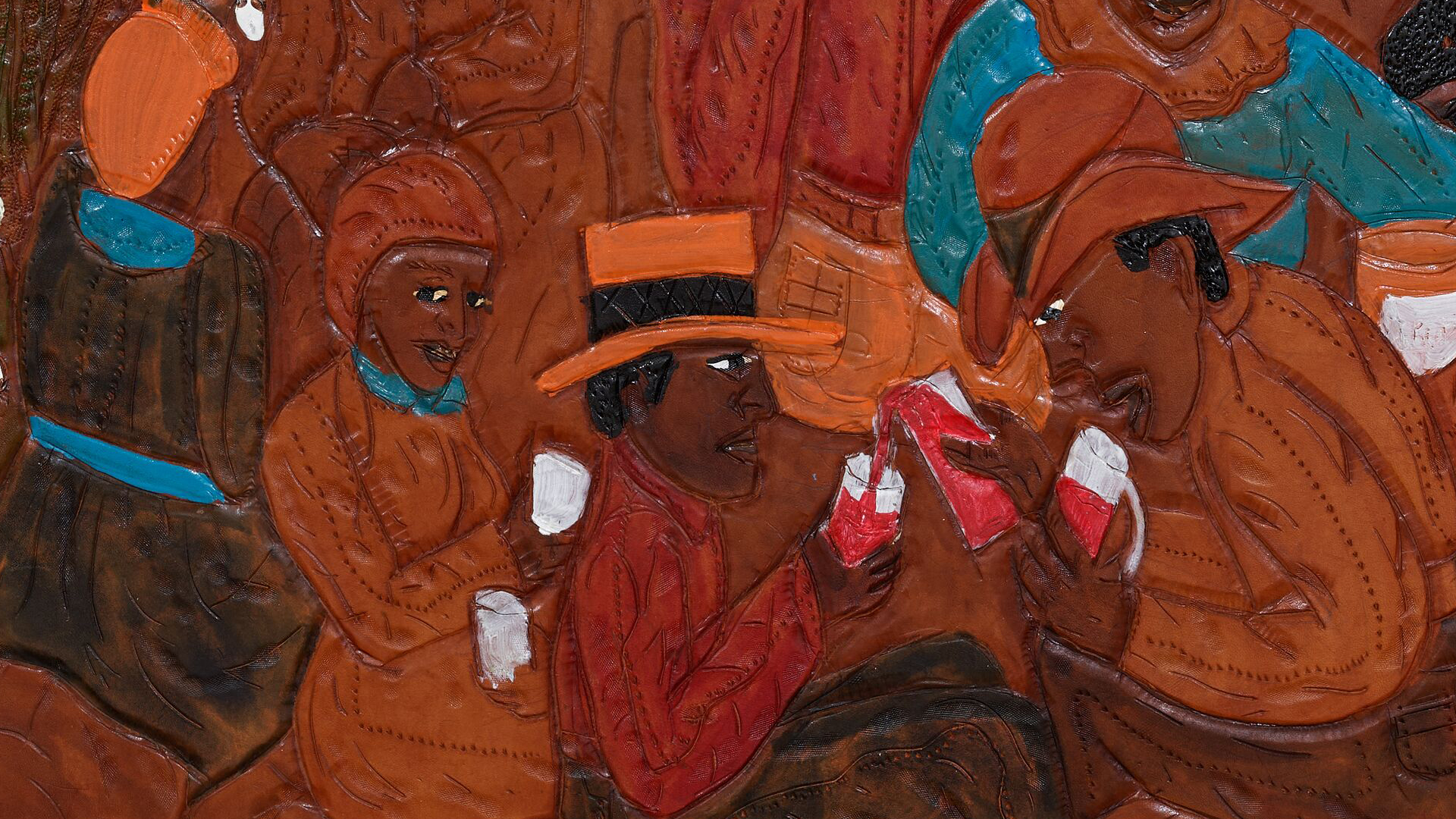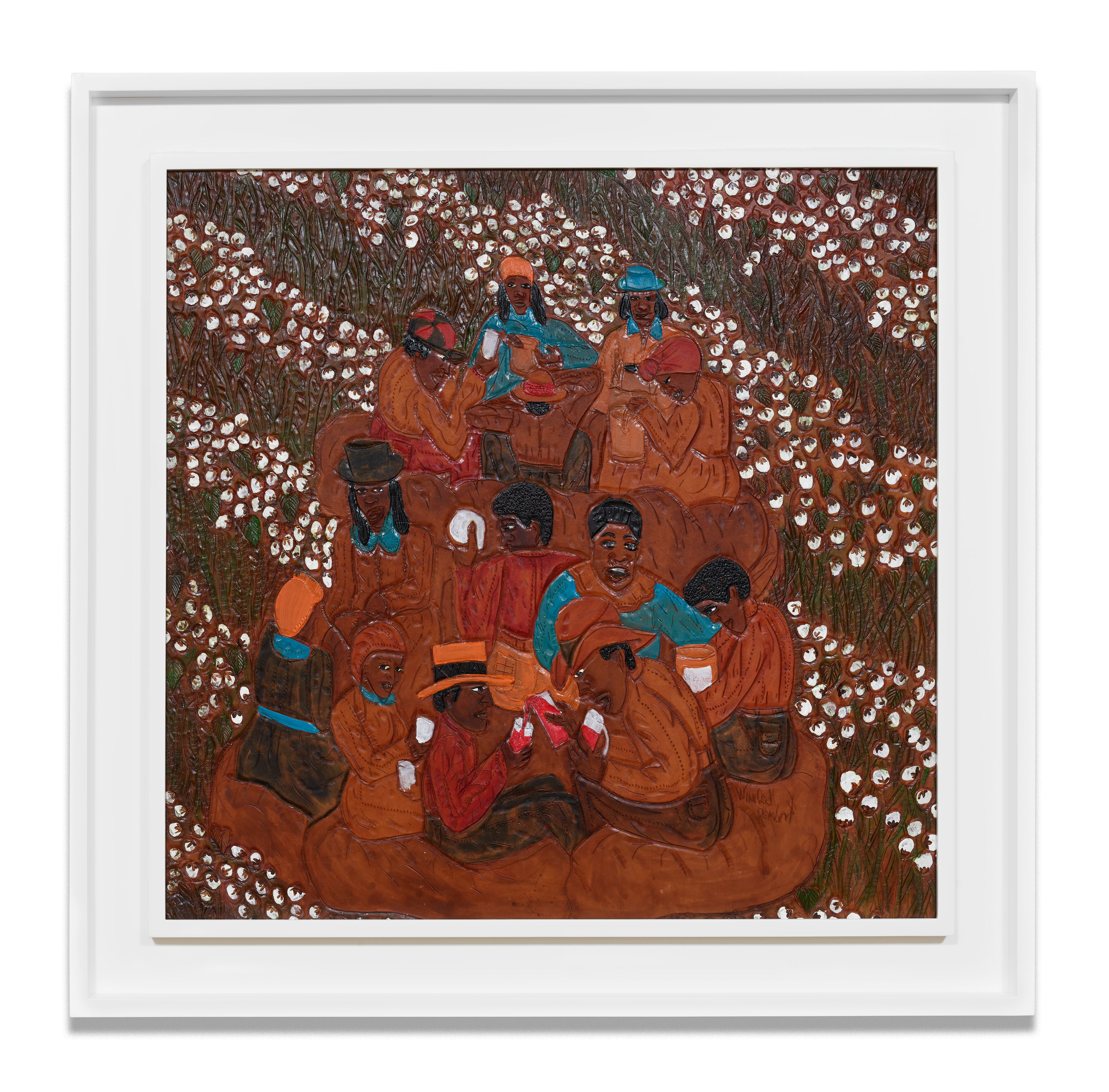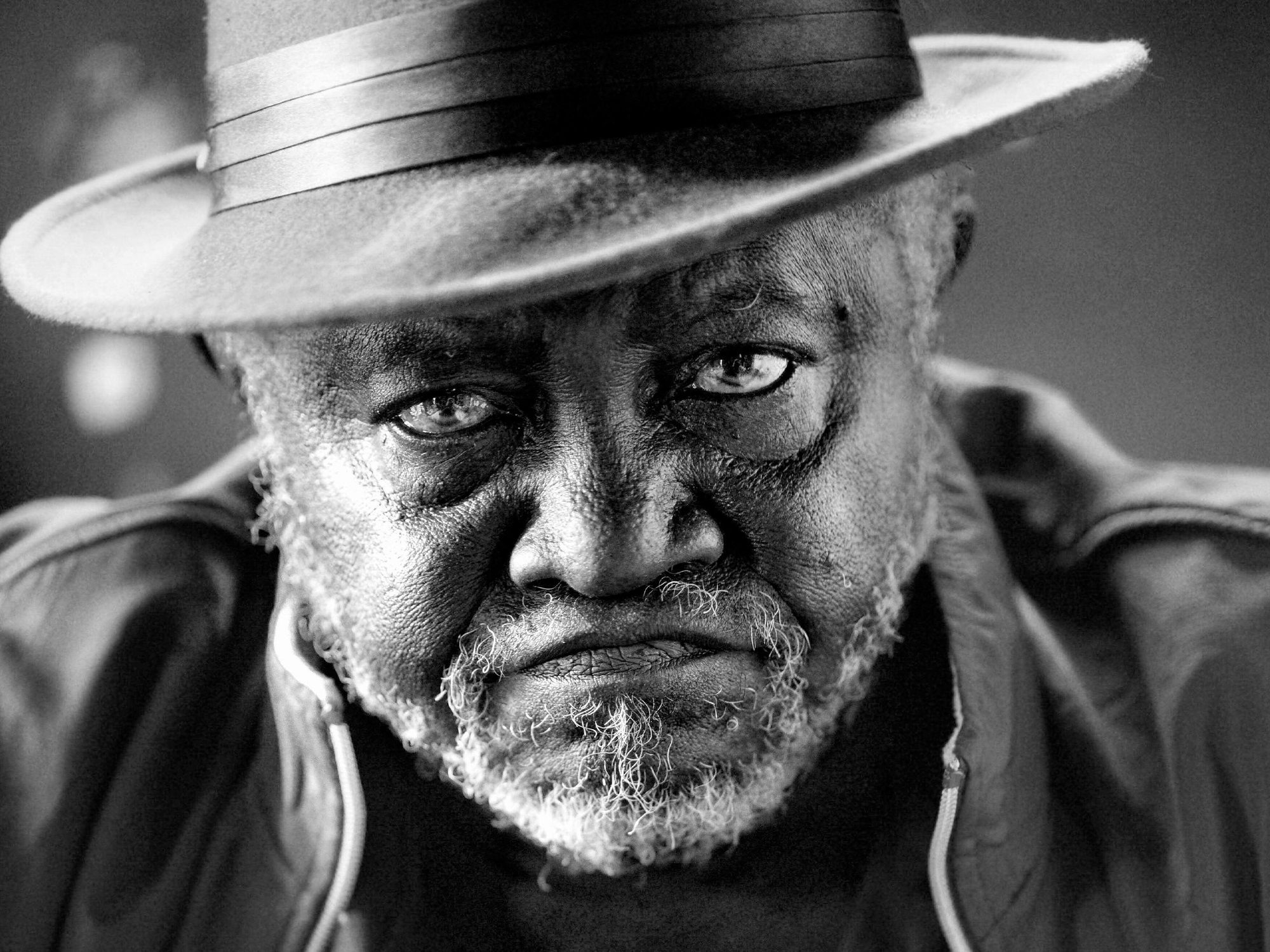Winfred Rembert
Untitled (Dinner Time in the Cotton Field)
Untitled (Dinner Time in the Cotton Field)
$350,000
Date Unknown
Dye on carved and tooled leather
73.7 x 86.4 cm / 29 x 34 in
‘The cotton field was the first thing in my life. The very first thing I remember. You know, kids look up and the face they see is their parents? Looking up at his parents is the first thing a child is supposed to remember. Not me. It seemed like I opened my eyes to cotton. I remember the cotton over the top of Mama. Just as far as I could see, all the way around, there was this white sheet of cotton. That’s the very first thing I can remember in my life. I opened my eyes and I saw that cotton, and it was a beautiful thing. When you get out there picking in it, though, you change your mind about how beautiful it is.’—Winfred Rembert [1]

Born in 1945 in Americus, Georgia, Winfred Rembert grew up under the oppressive segregation of the Jim Crow South. In 1965, he was thrown in jail after a civil rights demonstration, and two years later survived a near lynching. This pivotal, harrowing experience was followed by seven years in the Georgia prison system. During this time, Rembert was taught how to tool leather by a fellow inmate named ‘T. J. the Tooler,’ who was allowed to create small functional leather items such as wallets. After his release from prison, Rembert moved north, eventually settling in New Haven, Connecticut where he lived for the remainder of his life. In 1996, at the age of 51, and with encouragement from his wife Patsy, he began to document his memories of life in Georgia in an outpouring of incredible narrative paintings.
‘Untitled (Dinner Time in the Cotton Field)’ is made with Rembert’s signature medium of carved, tooled and painted leather. It is one of many works that evoke the long hours Rembert toiled picking cotton. In this beautifully detailed piece on leather, workers in the front scene are resting on cotton sacks, sharing a drink after a long day of work in the field. The figures in muted tones complement the natural color of the leather background. Around them the rows of white cotton contrast with the red clay dirt and the green of the cotton plants. In its narrative and formal qualities, Rembert’s work, with its corporeal texture, intense color, powerful patterns and depictions of both hardship and pleasure, takes its place among the oeuvres of the most influential American figurative masters.

‘Winfred Rembert’s story of redemption and survival is an essential record of the stark brutality of post-Jim Crow America and a reminder that this history is still a recent memory. His life’s work is a compelling example of the power of art to bring visibility to the dark corners of human experience and an object lesson on the incredible resilience of the human will.’—Mark Bradford




 Winfred Rembert (1945 – 2021) was born in Americus, Georgia and grew up in nearby Cuthbert, a rural railroad town located in the southwest region of the state, once at the center of the Deep South’s plantation economy. Living in Cuthbert during the era of Jim Crow, Rembert was exposed at a young age to the exploitative practices of the sharecropping system. Spending much of his childhood alongside family members working in the fields, Rembert received a limited education. Despite the infrequency of his attendance, a dedicated teacher by the name of Miss Prather recognized Rembert’s artistic talent and encouraged him to express his creativity through drawing.
Winfred Rembert (1945 – 2021) was born in Americus, Georgia and grew up in nearby Cuthbert, a rural railroad town located in the southwest region of the state, once at the center of the Deep South’s plantation economy. Living in Cuthbert during the era of Jim Crow, Rembert was exposed at a young age to the exploitative practices of the sharecropping system. Spending much of his childhood alongside family members working in the fields, Rembert received a limited education. Despite the infrequency of his attendance, a dedicated teacher by the name of Miss Prather recognized Rembert’s artistic talent and encouraged him to express his creativity through drawing.